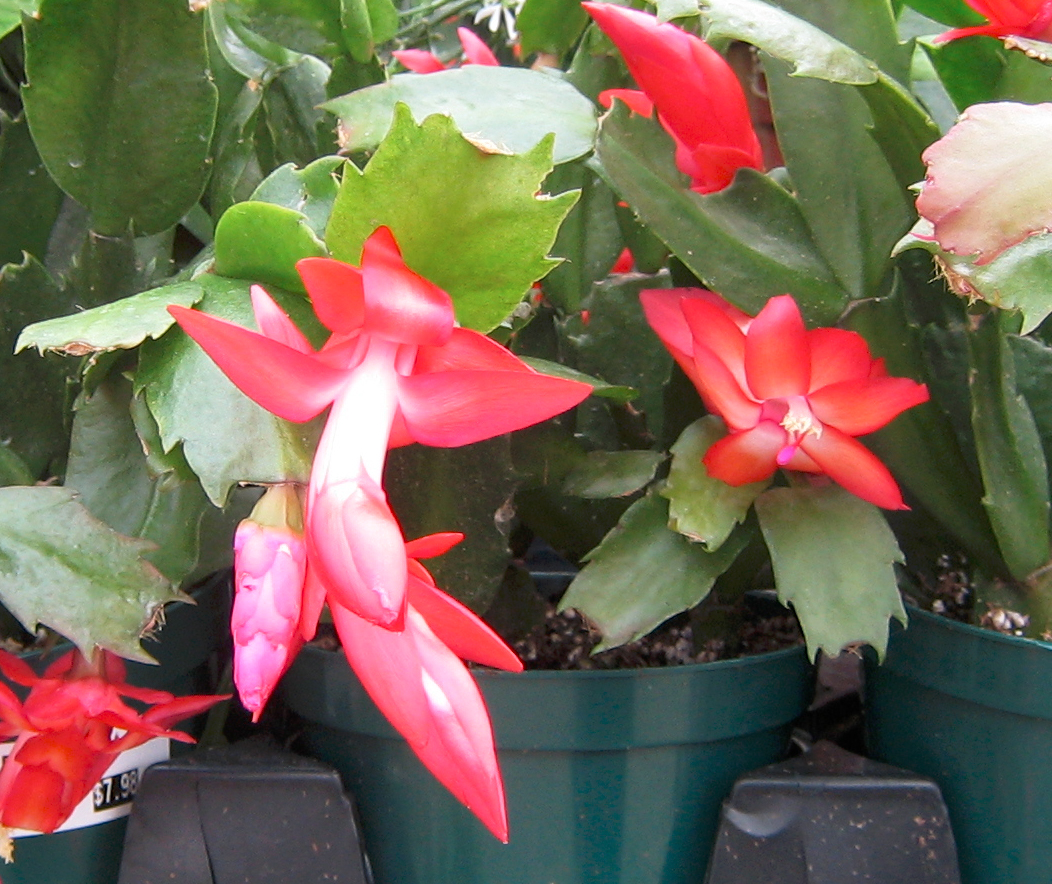Caring for your Christmas Cactus
The idea of growing a cactus has always fascinated me but the sharp spines were never great with the kids. Or me, really.
The Christmas Cactus is a great alternative. Schlumberga x buckleyi, a member of the Cactaceae family, is known as the true Christmas Cactus – you see, there are two other contenders for the position but this hybrid has been traced back to the 1840s when it was created by William Buckley at Rollisson Nurseries in England.
But no matter which you have, care is the same and can be a bit tricky if you’re not careful.
Placement
The Christmas Cactus needs a fair bit of light. Windowsills that provide partial sun are perfect. Avoid full sun. More sun produces more blooms but too much can burn the plant’s leaves. Keep the plant away from drafts as it prefers to be kept warm (15-18°C) once flowers have started to form. For flower formation, the cactus needs cooler temperatures (10-12°) so keep away from vents.
Watering
The Christmas Cactus is not a traditional desert cactus and requires soil to be kept moist but not soggy. Overwatering causes floppy stems and leaves whereas underwatering causes leaves and stems to shrivel.
In October, to promote flower bud formation, do not water. Water in November until the plant has finished blooming (end of January or so). Once finished, withhold water for six weeks. Top with new, well-draining soil or repot during this time. Resume watering after six weeks, keeping soil evenly moist without making it soggy. Allow top to dry between waterings.
Feeding
Apply a diluted solution of regular houseplant fertilizer beginning in the spring when new growth starts. Consistently apply every 2-3 weeks until new growth has finished growing in (mid- to late summer).
Re-potting
If your plant looks unhealthy, re-potting it may be what it needs. Go up only one container size (for example, a plant in an 8″ pot would be re-potted into a 10″ pot). Best to re-pot in the spring but any time is ok if your plant seems a bit off. Repotting each year, whether you increase pot size or not, will help promote new growth from roots. New soil will provide a light fertilizer to keep it healthy.
Blooming
Cooler temperatures are the key here. The long nights and cooler temperatures of October and November in Canada are perfect so as long as your plant is kept away from heat vents, you should see plenty of flowers. Do not fertilize during bud formation (September – October) and keep watering to a minimum during this time (with October not applying any water at all). If, still, you’re not getting any blooms, keep your plants in the basement or somewhere dark for up to 14 hours a day. But remember that once the plant starts to bloom, it will need bright light.
If your flowers are dropping before opening, you have a problem with low humidity. Mist your plant every few days and make sure the soil is kept moist.




